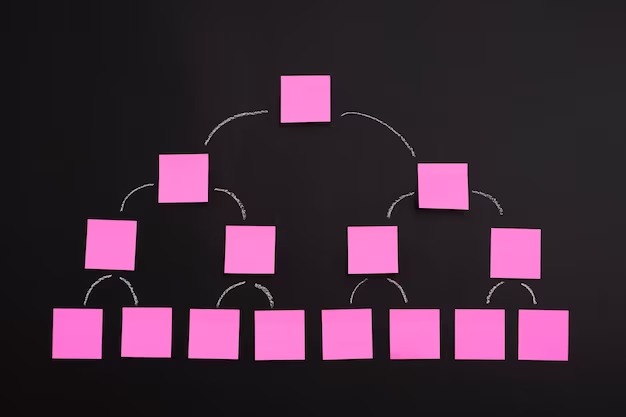
Managing a project successfully is akin to solving a complex puzzle. Every piece, no matter how small, must fit perfectly to produce the desired outcome. Among the various methodologies and tools that have been developed over the years to simplify and streamline the project management process, one stands out due to its sheer effectiveness: the Work Breakdown Structure (WBS). This piece aims to demystify the role of the WBS in project management, highlighting its importance and the advantages it brings to the table.
Understanding the WBS in Project Management
At its core, a Work Breakdown Structure is a hierarchical decomposition of the total scope of work to be carried out by the project team to accomplish the project objectives and create the required deliverables. In simpler terms, the WBS in project management is like a map that breaks down the entirety of the project into manageable chunks or tasks.
Why is the WBS Crucial in Project Management?
- Clarity and Definition: A WBS offers a clear picture of what needs to be done. By dissecting a project into smaller tasks, it provides teams with a clear understanding of their responsibilities and deliverables.
- Resource Allocation: Once the tasks are defined, it becomes easier to allocate resources, be it manpower, materials, or machinery, effectively ensuring that each segment of the project gets the attention it requires.
- Time Management: Time is often the most critical constraint in projects. The WBS allows for accurate time estimations for each task, facilitating the creation of a realistic project timeline.
- Budgeting: With a clear breakdown of tasks, budgeting becomes more accurate. Each segment can be costed, providing a clearer picture of the project’s financial requirements.
- Risk Management: By understanding the project at a granular level, potential risks at each stage can be identified and mitigated.
Constructing a WBS in Project Management
Creating a WBS is not a one-size-fits-all procedure. It needs to be tailored to fit the unique requirements of each project. However, a general approach involves:
- Define the Project: Understand the project’s scope, objectives, and deliverables. This sets the stage for the breakdown.
- Break Down the Project: Start at the highest level, breaking the project into primary tasks. Continue breaking down these tasks into sub-tasks and, if necessary, further into sub-sub-tasks. The goal is to reach a level where each task can be easily understood and managed.
- Assign a Code: Each task and sub-task should be given a unique code. This helps in tracking and also facilitates communication.
- Review and Refine: Once the initial WBS is created, it should be reviewed. Ensure that no tasks have been overlooked and that each breakdown is logical and manageable.
The Power of Visualization: WBS Diagrams
While a WBS can be constructed as a list or a table, visual representations often prove more effective. A WBS diagram, often resembling an organizational chart, presents the breakdown of tasks visually, offering a quick snapshot of the project’s structure. This visual representation is particularly useful when presenting project plans to stakeholders who may not be familiar with the intricacies of project management.
Potential Pitfalls and How to Avoid Them
While the WBS in project management is an invaluable tool, there are potential pitfalls. One common mistake is diving too deep, resulting in an overly complex WBS that is hard to manage. Conversely, not going into enough detail can leave teams without clear direction. Striking the right balance is crucial. It’s also essential to ensure that the WBS remains flexible. As the project progresses, tasks might need to be added, removed, or adjusted.
Incorporating WBS in Modern Project Management Tools
In today’s digitally-driven era, the importance of the WBS in project management is further amplified when incorporated into modern project management tools and software. These platforms allow for interactive WBS designs, where tasks can be easily dragged, dropped, and linked, enhancing adaptability.
- Integration with Other Tools: Many project management platforms allow for WBS integration with other essential tools like Gantt charts, timelines, and resource allocation charts. This interconnectedness means that a change in one area (like the WBS) can automatically reflect in others, ensuring consistency.
- Collaboration: Modern tools facilitate real-time collaboration. Team members can simultaneously access and edit the WBS, leading to dynamic brainstorming sessions and ensuring everyone is on the same page.
- Reporting: With built-in analytics, these tools can generate reports based on the WBS. Whether it’s tracking progress, assessing resource allocation, or estimating costs, these insights can be invaluable in ensuring project success.
The Role of WBS in Agile Project Management
Agile project management, known for its flexibility and iterative approach, might seem at odds with the structured nature of a WBS. However, even within Agile frameworks, a form of WBS is present. The product backlog, which is a prioritized list of features, tasks, and requirements, can be likened to a WBS.
In Agile, the WBS (or the product backlog) remains fluid, continually evolving based on feedback and iterations. While the methodology differs, the core principle remains: breaking down a project into manageable tasks to provide clarity and direction.
Conclusion: Embracing the Future with WBS
The WBS in project management has stood the test of time, adapting and proving its worth across various methodologies and tools. As project management continues to evolve, driven by technology and changing business landscapes, the WBS remains a central pillar. Embracing this tool, understanding its nuances, and leveraging its strengths can be the difference between project success and failure. As the saying goes, “Well begun is half done,” and a well-constructed WBS is indeed a strong beginning.